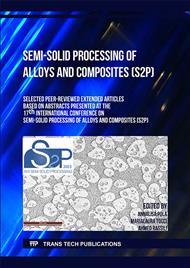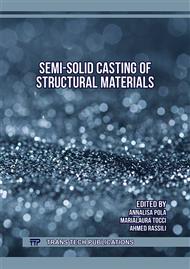p.141
p.147
p.157
p.165
p.171
p.177
p.183
p.191
p.197
Quality Control of Semi-Solid Die Casting by Filling Pressure Based on Machine Learning Method
Abstract:
In the actual semi-solid die-casting production, the existence of several uncertain factors can impose an effect on the final product quality, which poses a challenge to semi-solid production. However, data analysis such as machine learning (ML) can help producers eliminate this problem. In order to quickly identify defective castings, a new model of predicting quality by real-time injection pressure data will be generated in terms of ML in this research. Quality assessment will be based on non-filling defect, density and tensile properties. The result of cross-validation shows that the classifier can achieve a confidence level of 0.95 for the quality classification. In addition, this research will find key intervals by the importance given by the model and analyze the effects of process on filling pressure. According to the result of feature screening, the surface quality problems are related to speed-pressure conversion and feeding displacement of plunger, the flowing state of slurry in filling affects the formation of defects and tensile properties. This work will make semi-solid die casting more automatically and efficiently, and thus provides support for semi-solid sustainable development.
Info:
Periodical:
Pages:
191-196
Citation:
Online since:
August 2023
Authors:
Price:
Сopyright:
© 2023 Trans Tech Publications Ltd. All Rights Reserved
Share:
Citation:



